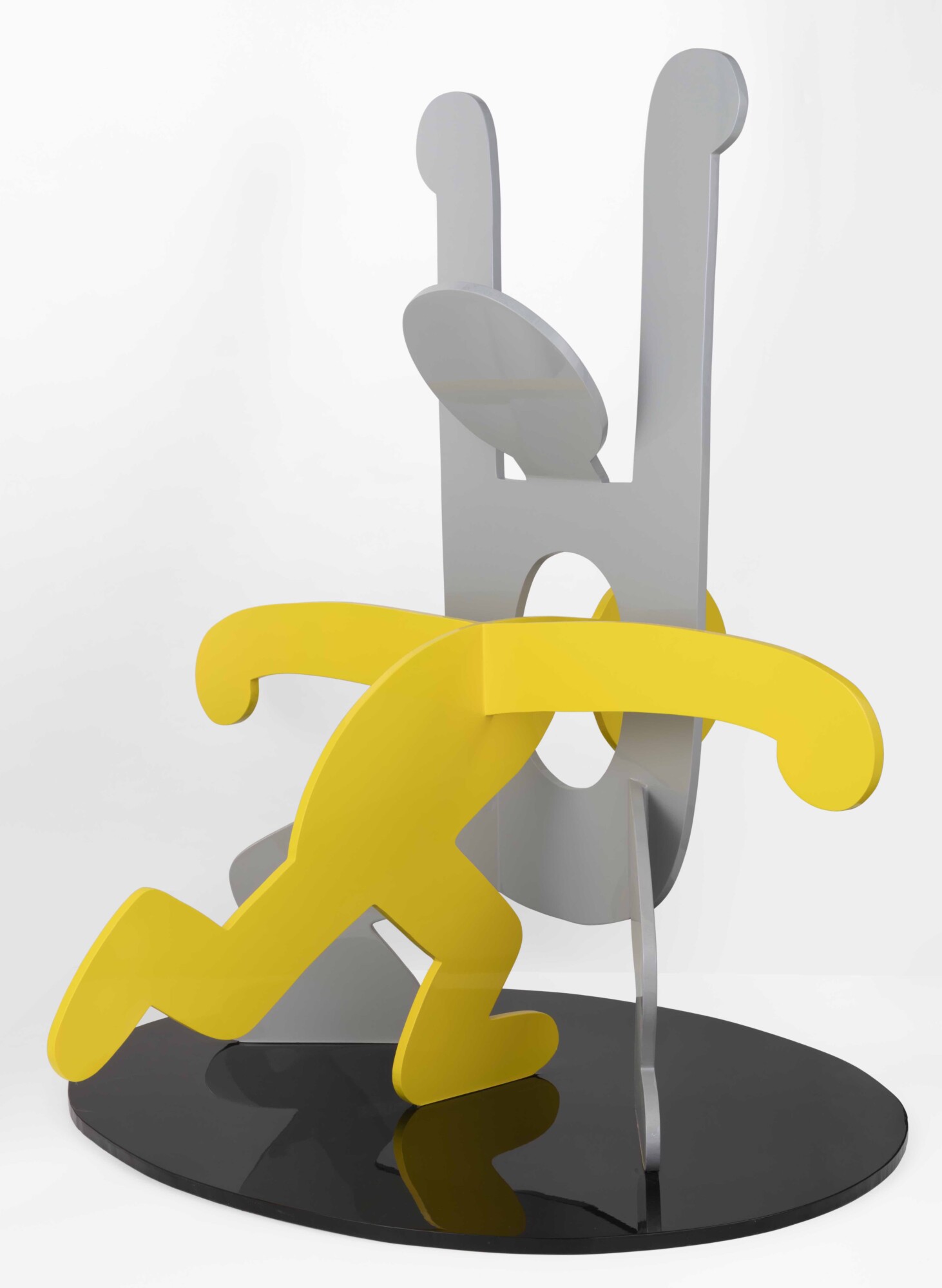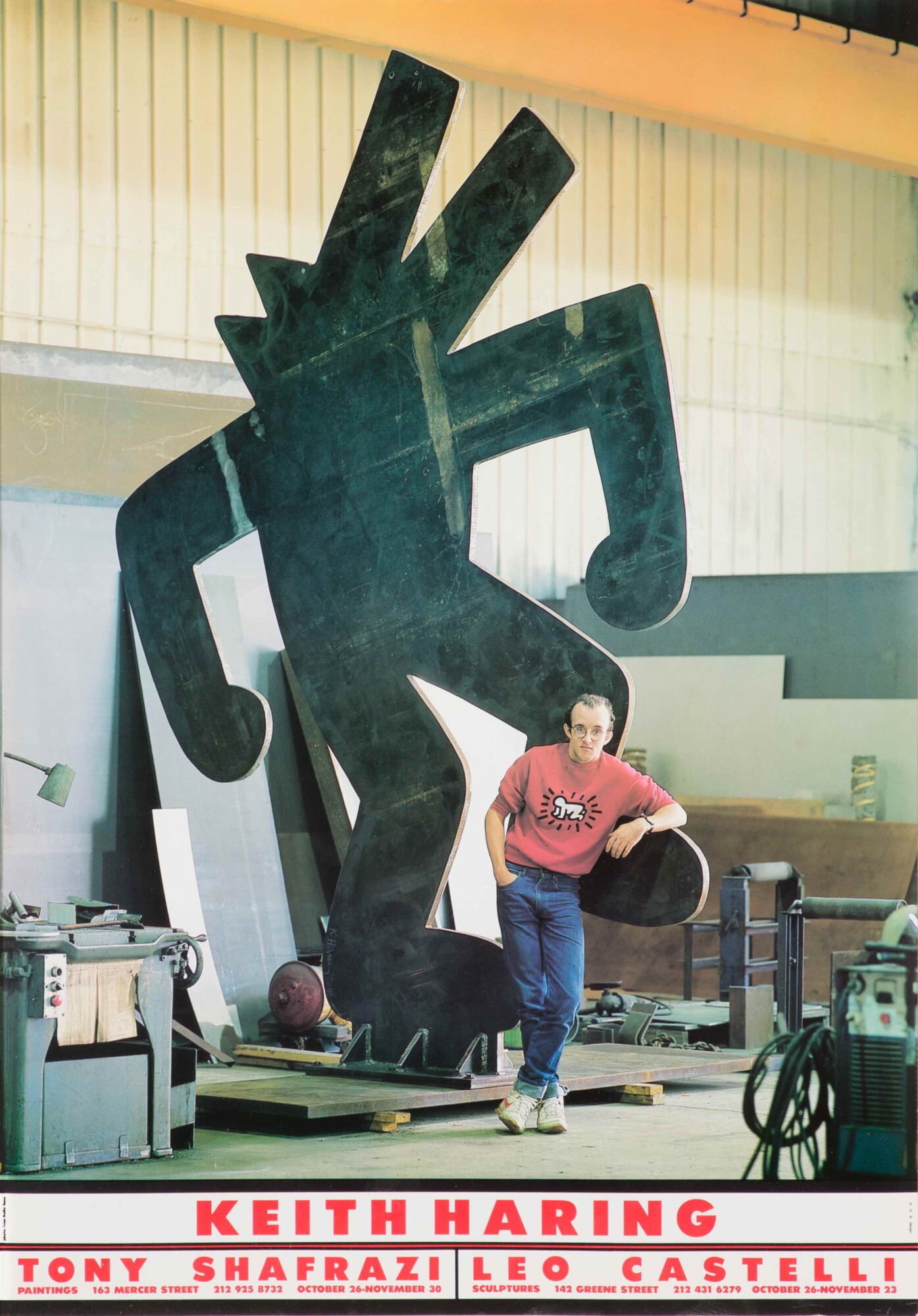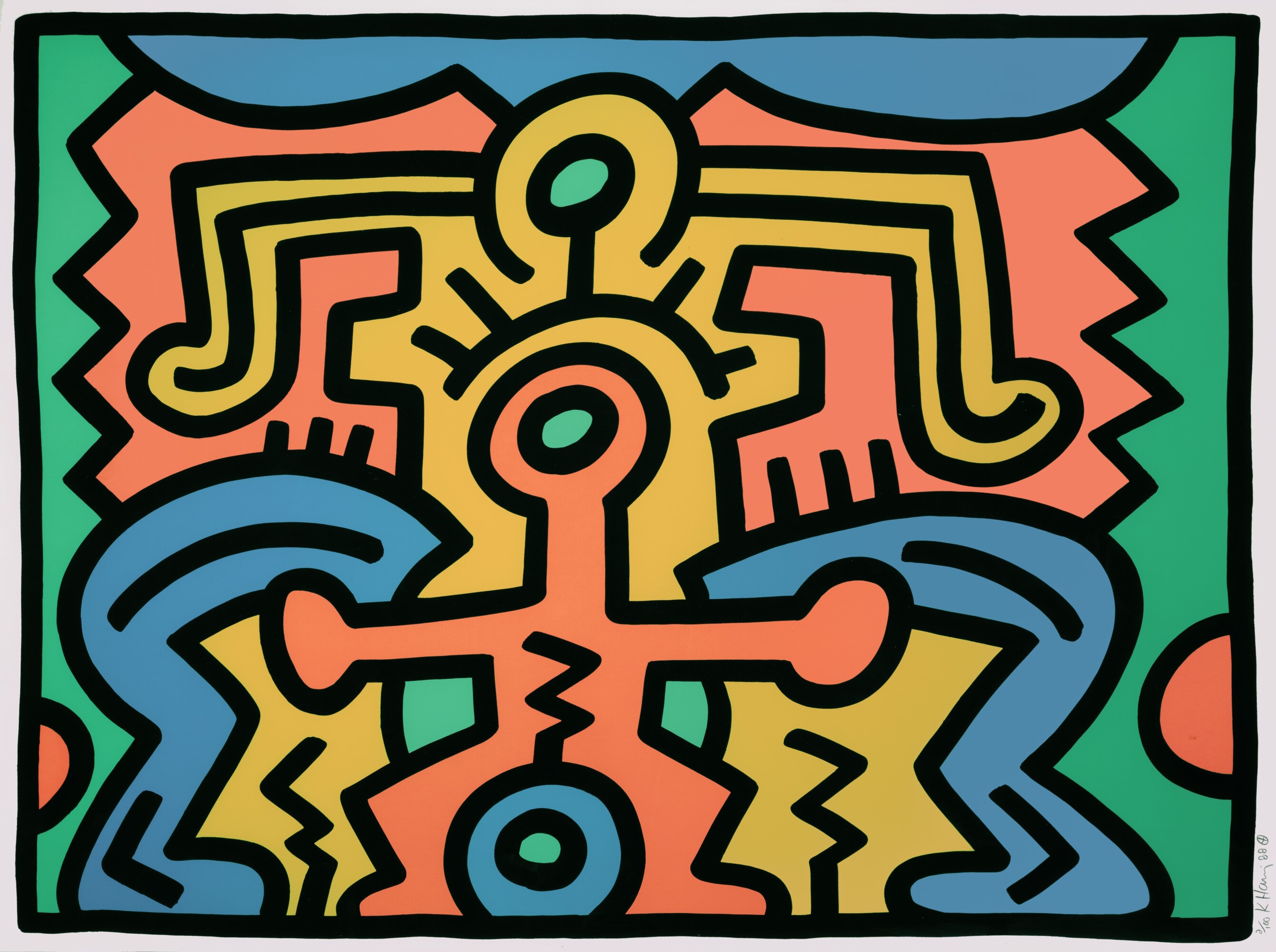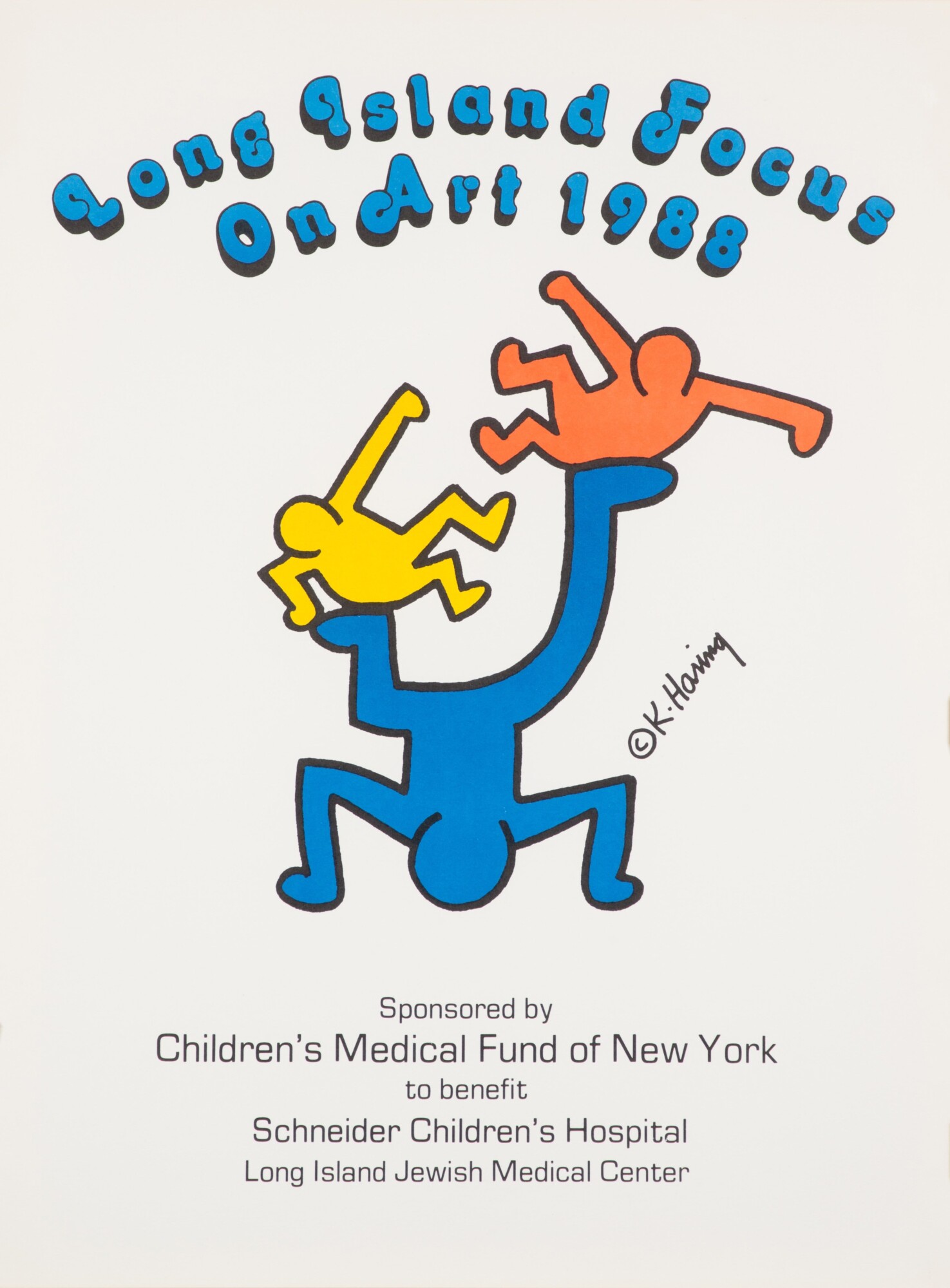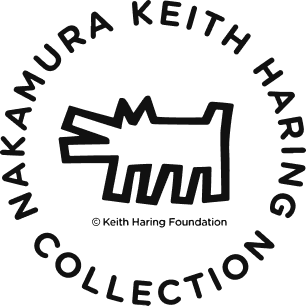
Designed by ©︎Kent Iitaka
Keith Haring: Arching Lines
後援:米国大使館、山梨県、山梨県教育委員会、北杜市、北杜市教育委員会
This year marks the 35th anniversary of Keith Haring’s passing (1958–1990). His artwork and merchandise continue to inspire, delight, and empower people around the world. In celebration of the newly acquired Untitled (Yellow Arching Figure), this exhibition focuses on Haring’s sculptural works, highlighting his unique aesthetic and philosophy through three-dimensional expression.
Haring began drawing at an early age, influenced by Walt Disney and Dr. Seuss, gradually developing his own symbolic visual language. In 1980, he launched his Subway Drawings in New York City’s underground stations, a project that affirmed his belief in direct communication with the public through art. This approach led him to create murals worldwide, establish the Pop Shop to make his work more accessible, and use art as a platform for social activism. Among his many creative endeavors, the sculpture stands out as a symbol of his commitment to public engagement.
In 1985, Haring began working with Lippincott, a Connecticut-based foundry known for producing sculptures by artists such as Robert Indiana and Donald Judd. This shift was encouraged by Tony Shafrazi, Haring’s gallerist, who asked, “Put your alphabet in the landscape, out there in the real world.” Following his first sculptural presentation at Leo Castelli Gallery, Haring expanded his practice, producing works at a foundry in Germany the following year. In 1987, he participated in the internationally acclaimed Skulptur Projekte Münster, further solidifying his role as a sculptor.
His sculptures transform lines into cut-out forms—sometimes intersecting in structured compositions, other times expanding freely into space—turning their surroundings into places of joy, surprise, and contemplation. Beneath these playful and bold forms lies a deep appreciation for the artistic legacies that shaped him. As his art evolved from line to surface and from surface to structure, Haring’s sculptures serve as a tangible extension of his lifelong dedication to human connection.
“All of the things that you make are a kind of quest for immortality. Because you’re making these things that you know have a different kind of life. They don’t depend on breathing, so they’ll last longer than any of us will. Which is sort of an interesting idea, that it’s sort of extending your life to some degree.”
— Keith Haring, 1988
FEATURED ARTWORKS
HIGHLIGHTS
1. First Public Exhibition in Japan of a Newly Acquired Large-Scale Sculpture
Created in 1985, Untitled (Yellow Arching Figure) is one of the works that marked the beginning of Keith Haring’s exploration in sculpture. At Lippincott, Inc.—the renowned American foundry that supported major artists such as Robert Indiana and Donald Judd—Haring produced his first group of sculptural works, including this piece.
Long held in a private collection, this sculpture has had very few opportunities to be shown publicly and is therefore a rare and significant work. In keeping with Haring’s legacy, our museum will permanently install the piece in an outdoor space, realizing his vision of art as a bridge that connects people and society.
2. Focusing on Haring’s Expanding Visual Language Across Line, Plane, and Form
Haring’s bold and even lines are not only a hallmark of his instantly recognizable style but also a symbol of his lifelong devotion to drawing. This exhibition highlights the development of Haring’s visual expression as it evolves from line to plane, and ultimately into three-dimensional form.
The early video work Painting Myself into a Corner (1979), created while Haring was a student at the School of Visual Arts, reveals his initial explorations into the expressive potential of the line. By juxtaposing two-dimensional works such as Growing 5 (1988) with three-dimensional pieces like Untitled (Three Dancing Figures, Version B) (1989), the exhibition provides an opportunity to explore Haring’s consistent visual language across different dimensions, as well as his sensitivity to the inherent qualities of each material.
3. Introducing Haring’s Wide-Ranging Projects that Connect Art and Society
Propelled to fame through his “Subway Drawings,” Haring became convinced of the power of art as a means of direct communication with the public. Throughout his career, he traveled widely, creating works that addressed urgent social issues—including human rights, AIDS awareness, and movements against war and nuclear armament.
Among his many socially engaged initiatives, Haring’s projects for children are especially noteworthy. Through endeavors such as Long Island Focus on Art 1988, which involved donating sculptures to a children’s hospital in Queens, he continuously devoted himself to connecting with young audiences—donating artworks to schools and hospitals, and conducting educational workshops around the world.
This exhibition introduces these wide-ranging social projects through posters, photographs, and video materials newly acquired from the Keith Haring Foundation, offering deeper insight into the artist’s enduring commitment to art as a force for community and compassion.
EXHIBITION GUIDES
Keith Haring: Arching Lines
This booklet introduces the works featured in the exhibition, accompanied by Keith Haring’s own words.
Discover the philosophy behind Haring’s dynamic and multifaceted forms of expression!
Booklet, 24 pages – ¥550 (tax included)
Atsushi Kitagawara: The Constellation of Time and Space
This leaflet offers an intimate yet concise look at the creative world of architect Atsushi Kitagawara, who designed our museum building.
Like tracing a star map, it invites you to delve deeper into the exhibition’s intricate relationships of time and space.
Leaflet – ¥110 (tax included)
Both guides are available exclusively at the museum venue.

EVENT
Blacklight Installation
We are presenting a special blacklight display featuring Untitled (1983, painting with fluorescent pigment) and Untitled (print), both created with luminous materials.
This marks the first time in about five years that these works are being shown under blacklight at our museum.
Immerse yourself in the mesmerizing glow that evokes the psychedelic atmosphere of 1980s New York, and experience Keith Haring’s vibrant artistic universe in a whole new light!
Blacklight Viewing Hours:
Every Saturday, Sunday, and national holiday during the exhibition period, 1:00 p.m.–2:00 p.m.
At all other times, the works will be displayed under standard lighting conditions.
Special Exhibition for Peace Months (July–September)

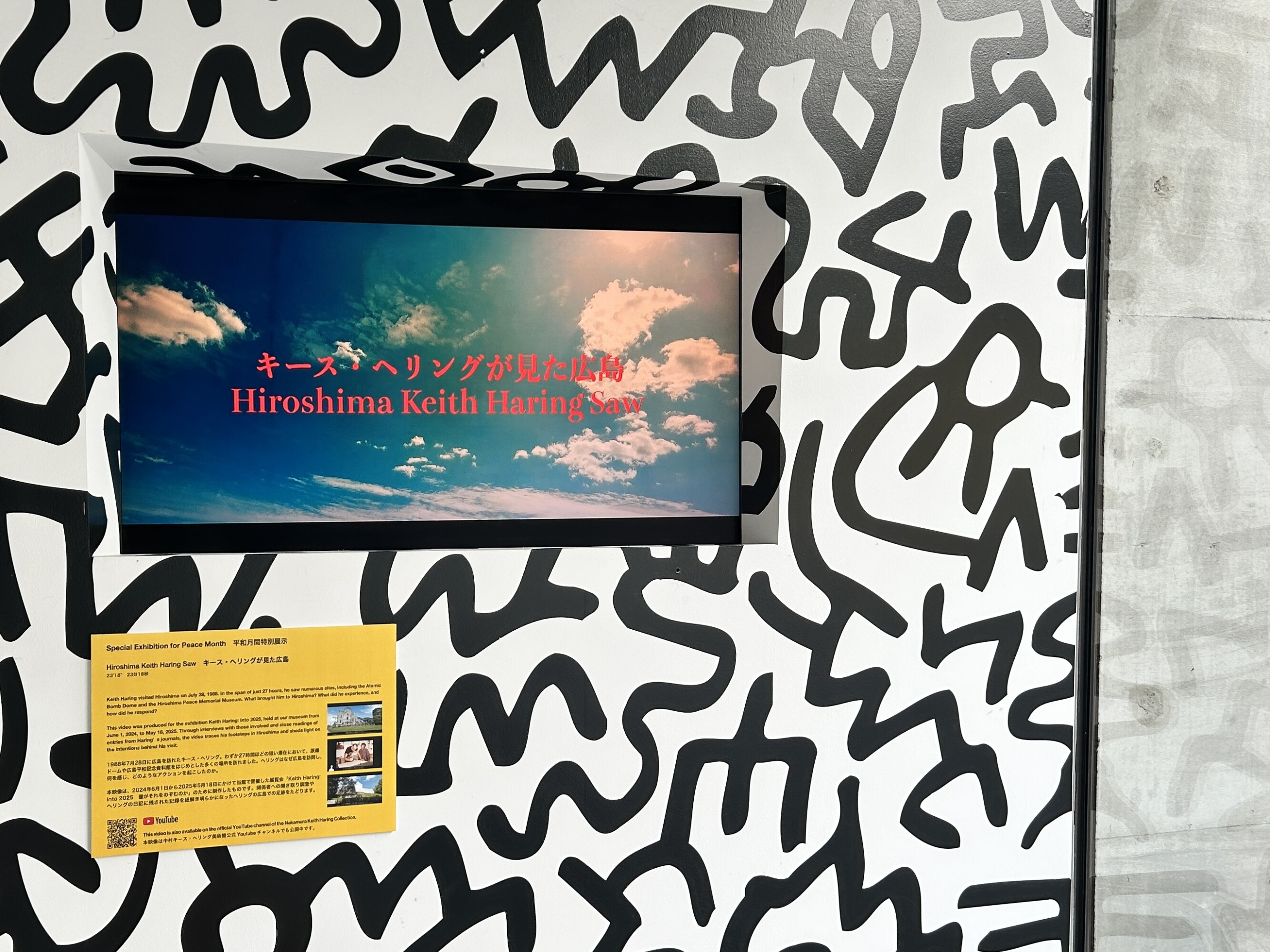
This year marks the 80th anniversary of the end of World War II.
From July through September, our museum will present a series of monthly displays featuring posters that invite reflection on the theme of peace.
On August 6, 1945, the world’s first atomic bomb was dropped on Hiroshima. Three days later, on August 9, another bomb devastated the city of Nagasaki.
Since the end of the war, both cities have continued to appeal to the world for the abolition of nuclear weapons and the realization of lasting peace.
Keith Haring created this poster in 1988 for the peace concert HIROSHIMA ’88.
That July, during his visit to the Hiroshima Peace Memorial Museum, Haring wrote the following words in his diary.
It is incredible that this destruction was caused by a bomb that was made in 1945, and that the level of sophistication and number of nuclear warheads has increased since then. Who could ever want this to happen again? To anyone? The frightening thing is that people debate and discuss the arms race as if they were playing with toys. All of these men should have to come here, not to a bargaining table in some safe European country.
―Keith Haring Journals, July 28, 1988
Beginning with his Poster for Nuclear Disarmament (1982), Keith Haring devoted his life to conveying messages of world peace through art.
In conjunction with this display, visitors are also invited to view the video Hiroshima as Seen by Keith Haring in the museum’s open space. This video traces Haring’s visit to Hiroshima and was produced for the exhibition Keith Haring: Into 2025 (June 1, 2024 – May 18, 2025), held at our museum last year.
Initiatives for Pride Month (June)
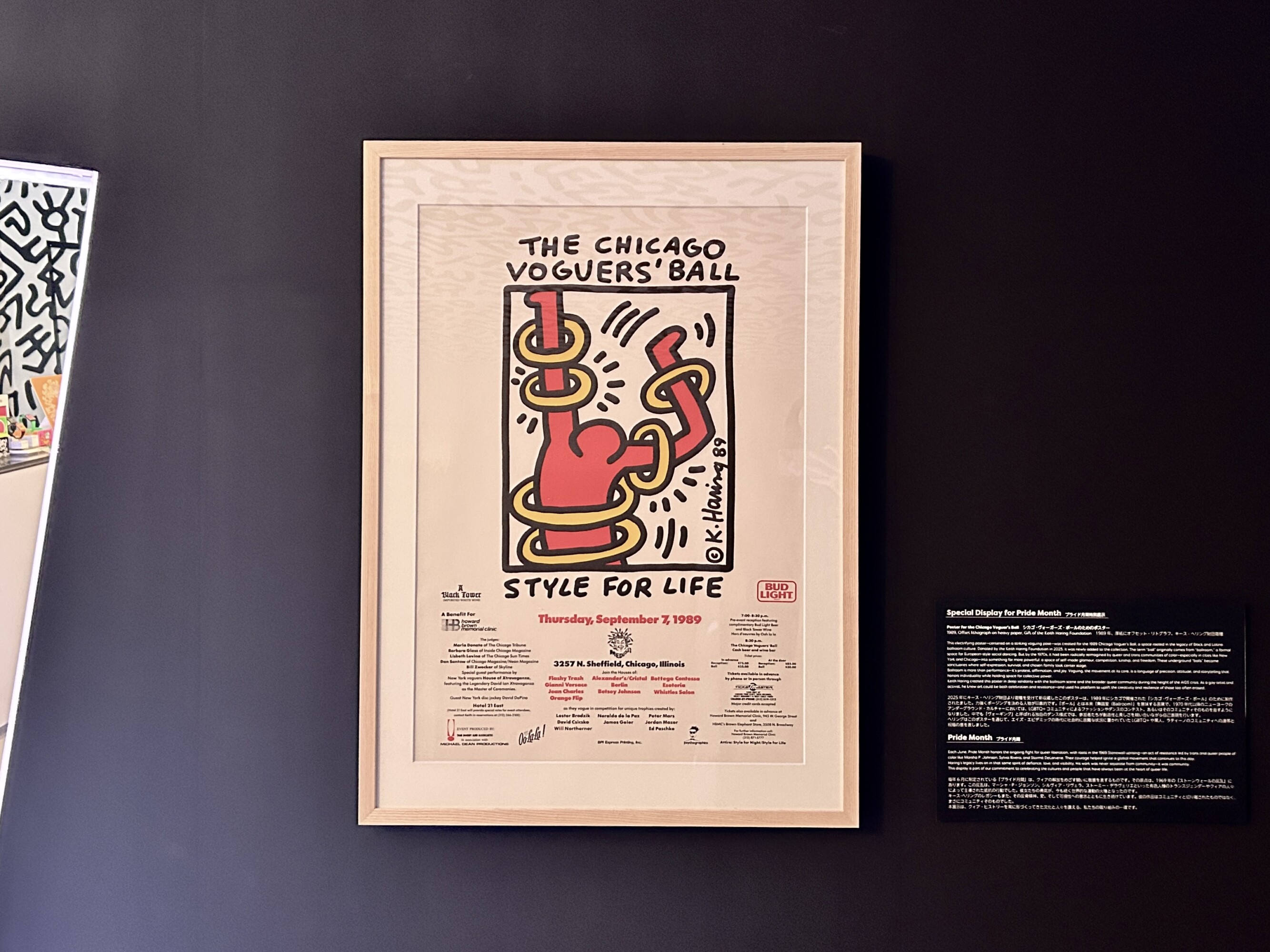


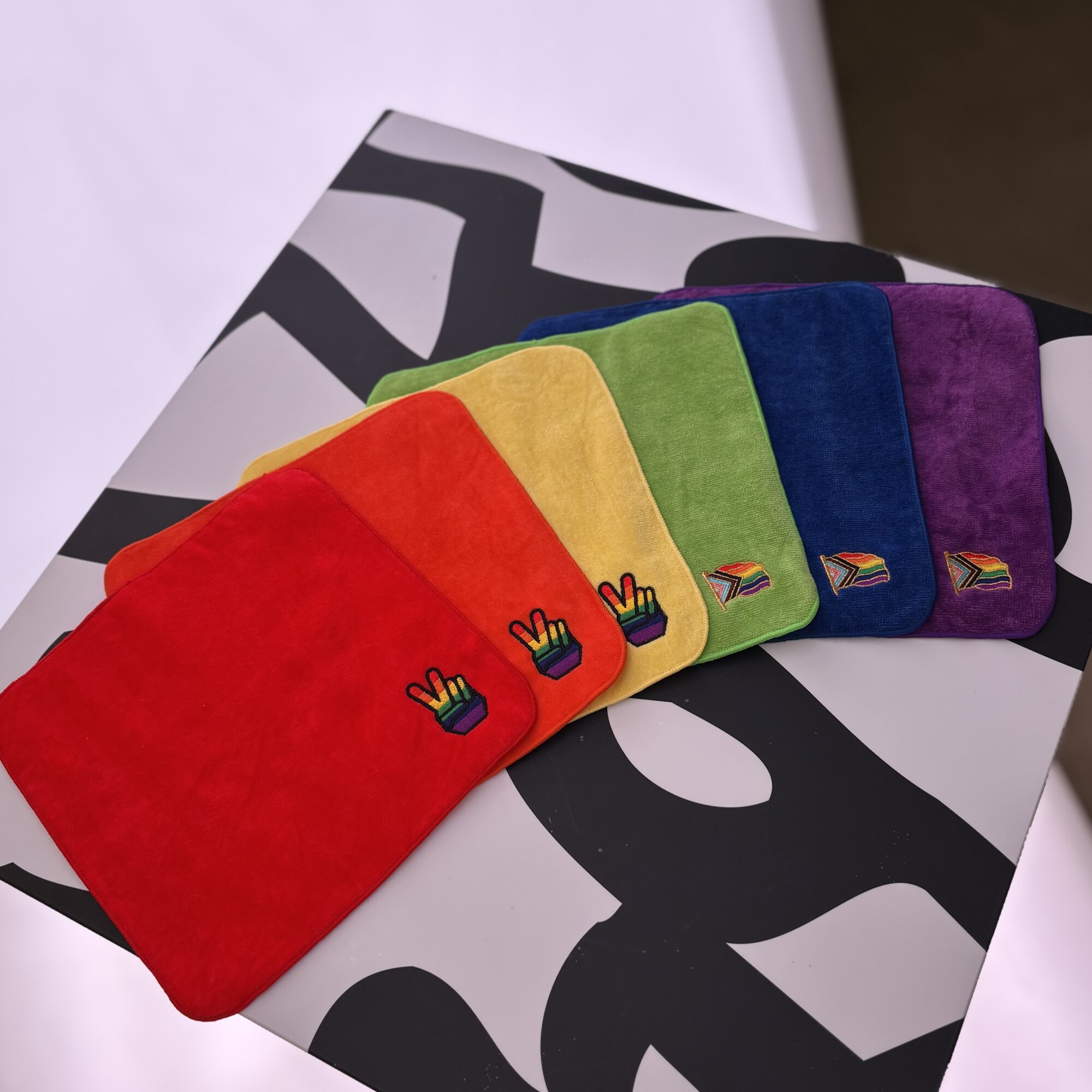
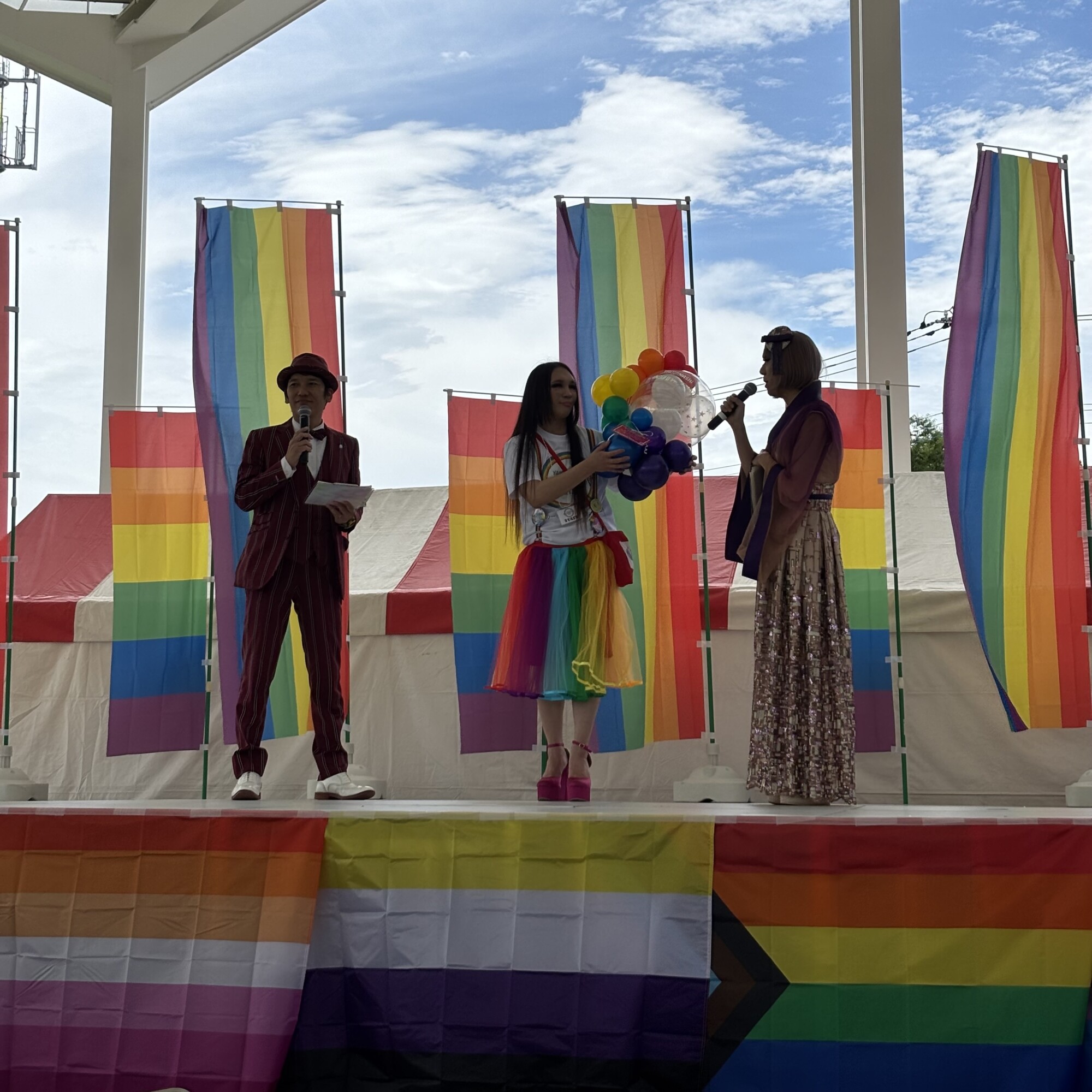
In celebration of Pride Month, a time when activities and events around the world raise awareness of LGBTQ+ rights, our museum carried out five initiatives aimed at deepening understanding and solidarity with the LGBTQ+ community.
- Special Display of the Newly Acquired Poster
Poster for the Chicago Voguer’s Ball - Collaboration with the Queer Event “fancyHIM”
- LGBTQ+ Awareness Training at Marriott International
- Launch of Original Rainbow-Themed Merchandise — Special Webpage Available
- Sponsorship of “Yamanashi Rainbow Pride”
VIDEO
